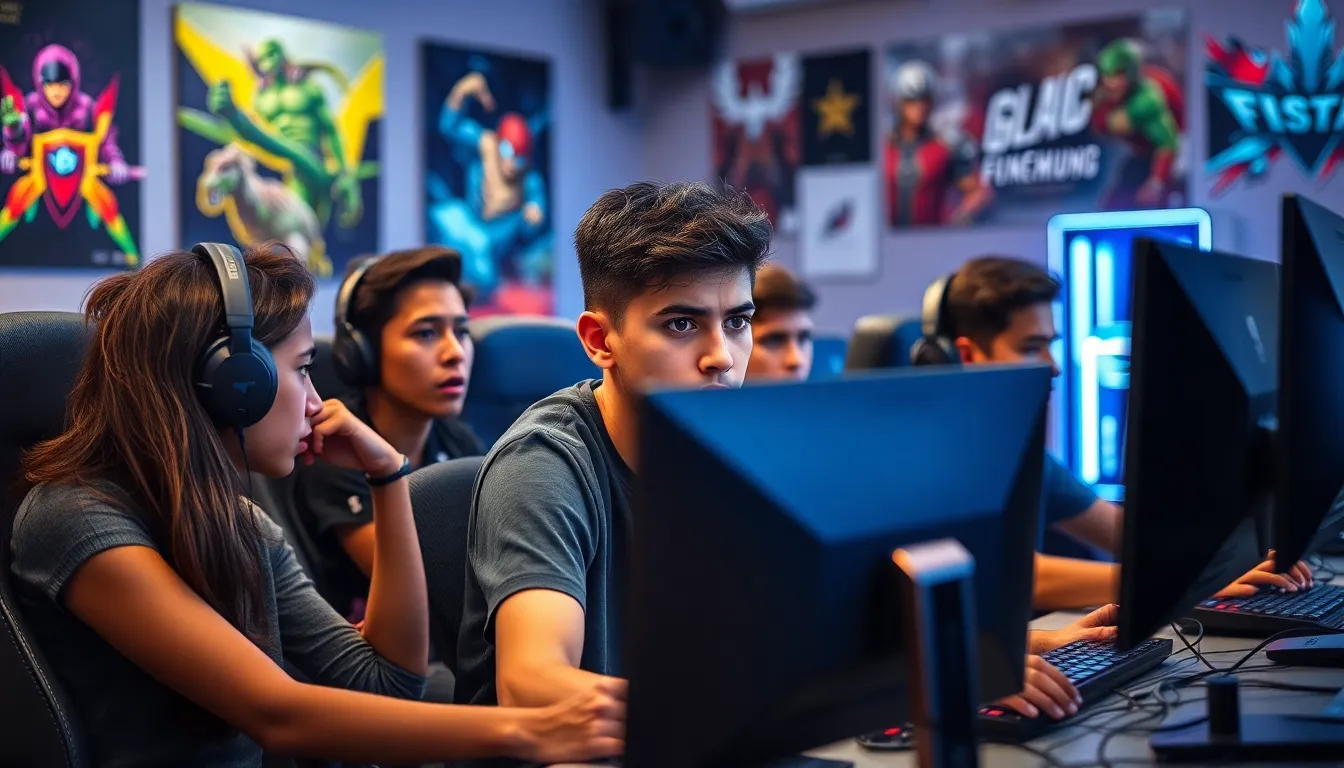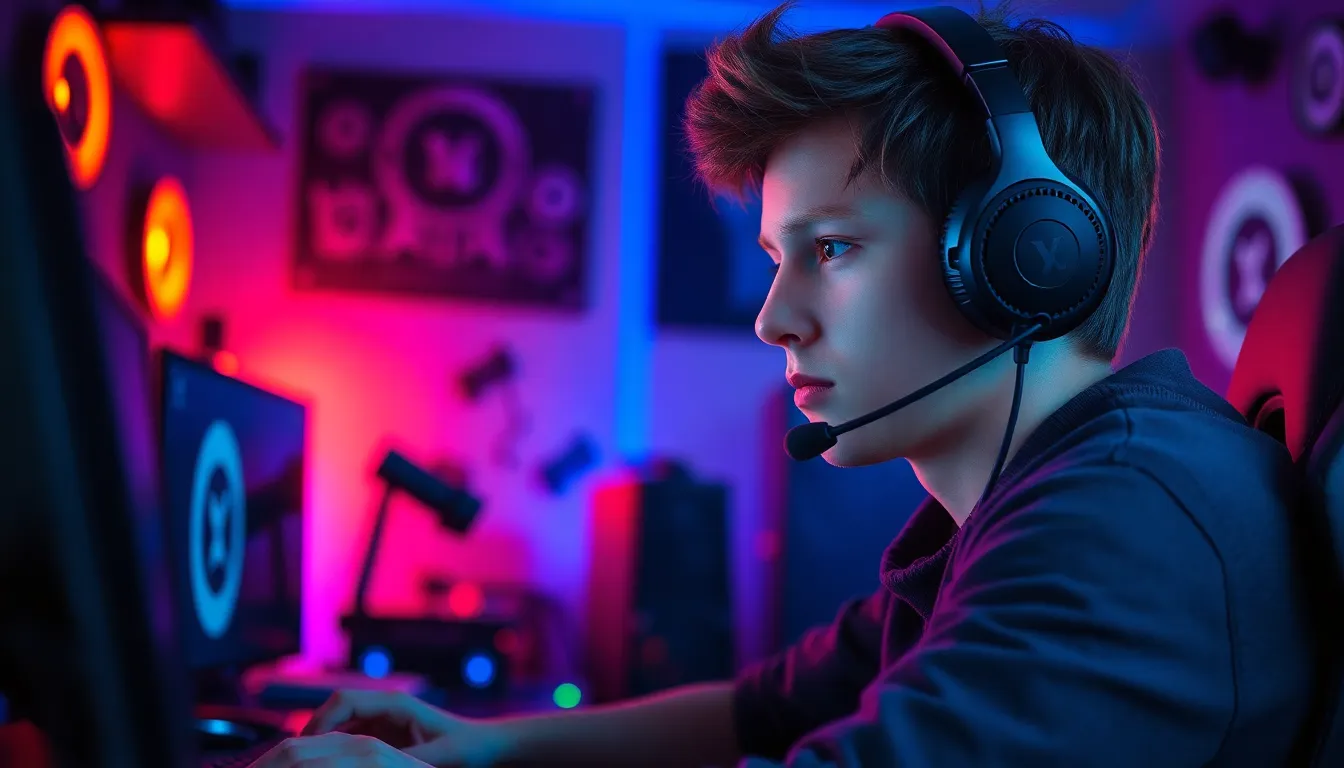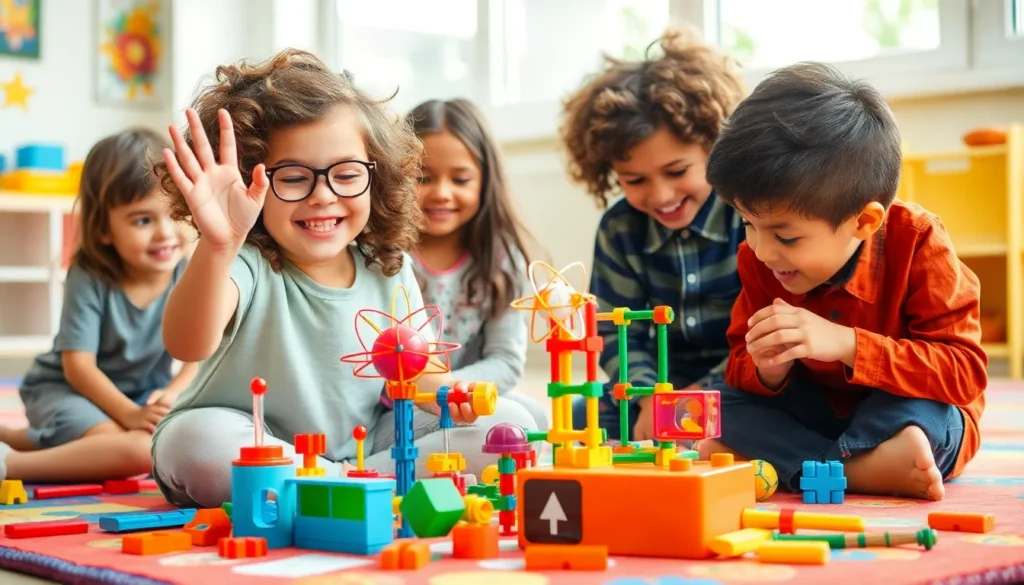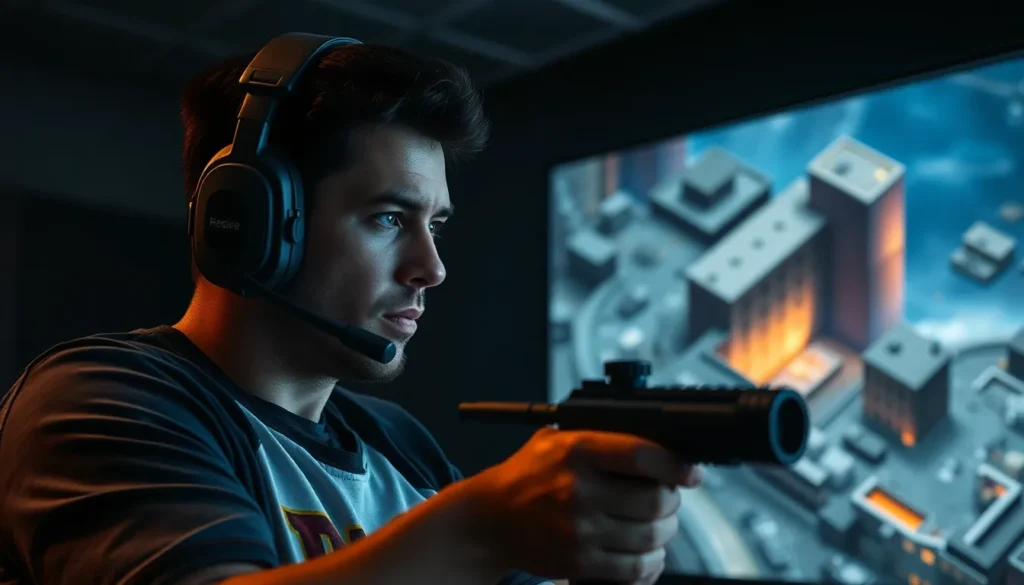Table of Contents
ToggleIn the vibrant world of Valorant, players dive into intense battles armed with strategy and skill. But lurking beneath the surface of this tactical shooter is a darker side—toxicity. It’s like finding a cockroach in your favorite pizza; it ruins the experience and leaves a bad taste. From trash-talking teammates to the infamous “rage quit,” the game can sometimes feel less like a team effort and more like a reality show gone wrong.
Toxicity not only disrupts gameplay but also impacts the community’s overall vibe. Gamers are left wondering if they signed up for a thrilling adventure or a soap opera filled with drama. So, why does this happen, and what can players do about it? Buckle up as we explore the ins and outs of Valorant toxicity and how to navigate this chaotic battlefield while keeping your sanity intact.
Understanding Valorant Toxicity
Toxicity in Valorant significantly affects player interactions and enjoyment. Negative behaviors often manifest during gameplay, leading to a less pleasant experience.
Definition of Toxicity in Gaming
Toxicity in gaming refers to disruptive and harmful behaviors that impact team dynamics. Examples include excessive trash-talking, harassment, and intentional sabotage. Such conduct damages the collaborative spirit of games like Valorant. Many players engage in this behavior out of frustration or competition. Understanding this definition helps recognize its presence within the gaming community.
Impact on Player Experience
Toxicity can severely diminish player engagement and satisfaction. Studies show that players exposed to toxic environments experience increased frustration and decreased performance. Many individuals report feeling stressed and demotivated when faced with negative interactions. It transforms what should be a fun experience into a source of anxiety. Ultimately, the thriving community around Valorant suffers from the effects of these toxic behaviors.
Factors Contributing to Valorant Toxicity

Toxicity in Valorant arises from various interconnected factors that impact player experiences and interactions.
Communication and Team Dynamics
Poor communication among players leads to misunderstandings. Toxic players often engage in excessive trash-talking or harassment, disrupting synergy within teams. Players who voice frustrations can inadvertently escalate tensions. Conversely, constructive feedback fosters positive team dynamics, promoting collaboration. Empathy in communication enhances overall gameplay quality. Players should prioritize respectful exchanges to minimize disruptive behavior, resulting in better experiences.
Competitive Environment
Intense competition creates pressure among players, often breeding frustration. Many players equate winning with personal worth, leading to emotional reactions during matches. In high-stakes scenarios, some individuals respond with hostility when faced with setbacks. The desire for recognition drives negative behavior, especially among players striving for ranks. Realizing that competition should remain enjoyable is crucial. Balancing skill development with maintaining a positive attitude is essential for a healthy gaming experience.
Consequences of Valorant Toxicity
Toxicity in Valorant leads to significant consequences for both individual players and the broader gaming community.
Effects on Players’ Mental Health
Players often experience heightened stress levels due to toxic interactions. Anxiety can increase as players face harassment or excessive trash-talking, transforming the gaming experience into a nerve-wracking event. Emotional well-being suffers as frustration mounts, leading to diminished motivation. Research indicates that hostile environments contribute to burnout, which can detract from players’ enjoyment. The pressure to perform well can exacerbate feelings of inadequacy. Sustained exposure to toxic behavior can result in decreased overall satisfaction with the game. Players report that these negative experiences overshadow the positive aspects of team play.
Influence on Game Community
Toxicity adversely affects the Valorant community’s atmosphere. Community engagement often declines as players opt to distance themselves from negative experiences. Friendly interactions and support within teams diminish when toxic behavior prevails. Consequences extend to matchmaking, where toxic players can disrupt the balance of competitive play. A negative reputation can arise, deterring new players from joining. The overall health of the community relies on encouraging respectful behavior and collaboration. Addressing toxicity fosters a more welcoming environment, promoting an inclusive gaming culture that enhances player retention.
Strategies to Combat Valorant Toxicity
Several strategies address the issue of toxicity in Valorant. These methods promote a healthier gaming environment while enhancing overall player experience.
Reporting and Moderation Tools
Reporting and moderation tools offer players a direct way to address toxic behavior. Players can report instances of harassment, excessive trash-talking, or intentional sabotage through the in-game reporting feature. The system prioritizes swift action against offenders, which can lead to account penalties or bans for repeat offenders. Creating a culture of accountability proves essential in reducing instances of toxicity. Regularly utilizing these tools helps reinforce the message that toxic behavior isn’t acceptable and fosters a more enjoyable experience for everyone involved.
Promoting Positive Behaviors
Promoting positive behaviors encourages a supportive gaming atmosphere. Players can support teammates through constructive feedback and encouragement, helping to build camaraderie. Celebrating achievements, no matter how small, fosters a sense of teamwork. Acknowledging good plays or helpful actions can shift the focus away from negative interactions. Forming a habit of positivity transforms the gaming experience, making matches more enjoyable and productive. Incentivizing good behavior through rewards or recognition also cultivates a community of respect and collaboration. Each small effort contributes to the larger goal of a healthier gaming environment.
Toxicity in Valorant poses a significant challenge that affects both individual players and the broader gaming community. It transforms a collaborative experience into a source of stress and frustration, undermining the enjoyment that the game is meant to provide. By acknowledging the impact of negative behaviors and fostering a culture of respect and positivity, players can reclaim their gaming experience.
Implementing strategies to combat toxicity not only enhances individual enjoyment but also strengthens the community as a whole. As players work together to promote constructive interactions and hold each other accountable, they can create a more inclusive environment that welcomes newcomers and retains seasoned players alike. Ultimately, the goal should be to ensure that Valorant remains a game where everyone can thrive and enjoy the thrill of competition without the shadow of toxicity.




